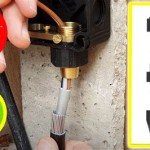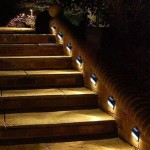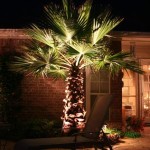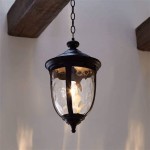Outdoor Flood Light Replacement Parts: A Guide to Maintaining Bright Illumination
Outdoor floodlights provide essential illumination for security, safety, and aesthetics. However, like any electrical fixture, they require regular maintenance, including the replacement of worn-out or damaged parts. Understanding the various replacement parts available and their functions is crucial for ensuring your floodlights continue to operate effectively and efficiently. This article will guide you through essential outdoor flood light replacement parts, explaining their roles and how to identify when they need replacement.
1. Bulbs: The Heart of Illumination
The most obvious replacement part for outdoor floodlights is the bulb. Bulbs are responsible for generating the actual light and come in various types, each with its unique characteristics. Common types include:
- Halogen Bulbs: Known for their bright, white light and affordability. They are less energy-efficient than other options.
- Incandescent Bulbs: These traditional bulbs are becoming less common due to their low energy efficiency. They produce a warm, yellowish light.
- LED Bulbs: Highly energy-efficient and long-lasting, LED bulbs offer significant cost savings and environmental benefits. They come in various color temperatures, from cool white to warm white.
- Metal Halide Bulbs: Used in high-intensity applications, these bulbs produce a bright, white light. They are highly energy-efficient but have a longer warm-up time.
When deciding on a replacement bulb, consider the following factors:
- Light Output (Lumens): Higher lumens indicate a brighter light. The required lumens depend on the area being illuminated.
- Color Temperature (Kelvin): Measured in Kelvin, color temperature determines the hue of the light. Cool white is ideal for security, while warm white creates a welcoming ambiance.
- Energy Efficiency: LED bulbs are the most energy-efficient option, saving you money on electricity costs.
- Lifespan: LED bulbs have the longest lifespan, lasting for tens of thousands of hours, while incandescent bulbs are the shortest-lived.
2. Lens: Protecting the Light Source
The lens of an outdoor floodlight protects the bulb from the elements and directs the light beam. It can become cloudy, cracked, or discolored over time, reducing the light output and effectiveness of the floodlight. A clear lens is essential for maximum light penetration. When replacing the lens, make sure it's compatible with the bulb and fixture design. Depending on the type of floodlight, you may find lenses with different beam angles, allowing you to customize the light pattern.
3. Ballast: Regulating Power Supply
A ballast is a crucial component in some types of floodlights, particularly metal halide and fluorescent fixtures. It functions as a power converter, regulating the flow of electricity to the bulb. Ballast failure can lead to flickering, reduced light output, or even complete fixture failure. When encountering issues like flickering or dimness, check the ballast for signs of damage, corrosion, or overheating. If it's faulty, replace it with a compatible model.
4. Wiring and Connectors: Ensuring Reliable Power Flow
The wiring and connectors within the floodlight are responsible for delivering power to the bulb and other components. Over time, these components can become corroded, damaged, or loose due to exposure to weather conditions. Damaged wiring or faulty connections can result in flickering, short circuits, or complete electrical failure. Inspect the wiring for any signs of fraying, cracking, or corrosion. If any issues are detected, replace the affected section of the wiring or connectors with new ones, ensuring they are compatible with the fixture's design.
5. Housing and Mounting Bracket: Providing Structural Integrity
The housing of an outdoor floodlight protects the internal components from the elements and provides a mounting point for the fixture. The mounting bracket securely attaches the floodlight to the wall or other surface. Over time, these components can become weather-damaged, weakened, or corroded. If you notice cracks, rust, or loose mounting, replace the housing or bracket to ensure stability and protection for the floodlight.
Regular maintenance is essential for keeping your outdoor floodlights in tip-top condition. Replacing worn-out or damaged components ensures optimal performance, prolongs the fixture's lifespan, and improves safety and security by providing reliable illumination. By understanding the functions of these replacement parts and taking proper precautions during replacement, you can effectively maintain your floodlights and enjoy their benefits for years to come.

How To Repair The Flood Lights

Customized 200w Die Cast Parts Led Flood Light S And Manufacturers China Factory Leelo Lighiting

Modular Led Flood Lights Ip68 Philips Lumileds Outdoor Wall Lighting Haichang Optotech

How To Install Flood Lights

What Is Outdoor Led Flood Light And Its Component

Led Flood Lights Outdoor Spotlights

500w High Power Led Flood Lights Haichang Optotech

The 7 Best Outdoor Flood Lights For Home Security In 2024

Commercial Electric 350 Watt Equivalent Broe Integrated Led Outdoor Street Lamp Flood Light With Dusk To Dawn Control Dw8899abz B The Home Depot

Commercial Led Floodlights Cooper Lighting Solutions
Related Posts







